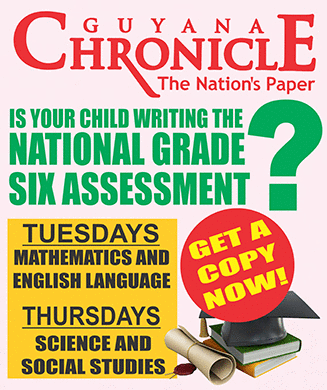By Shaquawn Gill, DPI
NEARLY four years ago, the National Assembly erupted into chaos as lawmakers clashed over a piece of legislation that would shape the destiny of every citizen – the Natural Resource Fund Act of 2021.
Amid shouts and confusion, the ceremonial mace itself was snatched away by Annette Ferguson, an Opposition Member of Parliament. Yet, from that turmoil emerged a law designed to protect the country’s oil riches and lay the groundwork for prosperity in years to come.
In this article, we explore this landmark piece of legislation, identifying its most protective measures, explaining how the average Guyanese can calculate the amount of money received and spent each year, and how this law will ensure Guyana stands resiliently against any potential economic shocks.
What is the Natural Resource Fund (NRF) Act?
The NRF Act is the cornerstone of Guyana’s approach to managing oil revenues. It established a sovereign wealth fund to ensure that the income from oil and gas benefits both current and future generations, while shielding the economy from the volatility of global energy markets.
Who watches over the NRF?
By law, Guyana’s oil earnings are deposited in an account at the Federal Reserve Bank of New York and is overseen by a Board of Directors appointed by the president. It includes a representative from the legal fraternity, a member from the private sector, and a person nominated by the National Assembly.
Currently, the Board of Directors is headed by Major General (Ret’d), Joseph Singh and includes Guyana’s Permanent Representative to the United Nations, Carolyn Rodrigues-Birkett; former People’s National Congress (PNC) parliamentarian Dunstan Barrow; Private Sector Executive Ramesh Dookhoo, and former Chancellor of the University of Guyana Professor Compton Bourne.
The Board of Directors is responsible for reviewing and approving the policies of the fund, as well as managing its performance. The Investment Committee also has an extremely important role. Among other things, this committee is responsible for ensuring that Guyana can earn no less than 3% a year from the monies deposited in the fund.
You can find out more about the roles and responsibilities of the Investment Committee in Section 9 of the NRF Act.
Additionally, the Bank of Guyana serves as another tier of oversight and management, ensuring transparency by publishing monthly and quarterly reports. A Public Accountability and Oversight Committee, independent of government, adds yet another layer of scrutiny.
In crafting the legislation, the government recognised that oil revenues are hinged on global market prices, and any economy relying on this income could be impacted by market fluctuations.
The Fund also ensures that the natural resources do not affect the country’s overall competitiveness. This means that the development of the oil and gas sector must not hinder the growth of other sectors such as agriculture and manufacturing.
How does Guyana choose what to spend—and when?
The NRF Act outlines in no uncertain terms a formula for the extraction of funds from the account. You can see how the amount for the 2025 budget was arrived at when applying the formula outlined in the updated schedule gazetted on February 6, 2024.
This formula will be applied every time the government intends to withdraw finances from the NRF. When Guyana begins to earn more than $5 billion in any given year, only 10% of those revenues can be extracted and transferred to the Consolidated Fund. These funds are budgeted for and announced at the beginning of every year and cannot exceed the amounts stipulated in the law, except during national emergencies.
How is the money safeguarded against misuse?
It is important to note that no money can be withdrawn from the account without parliamentary approval. This approval ensures that each reason for expenditure is interrogated, and a detailed breakdown must be given to any parliamentarian who asks for that information to be made public. This information is placed in the parliament’s Hansard and detailed in each volume of the Consideration of Estimates and Expenditures produced by the Ministry of Finance.
Not only is Guyana’s oil money subjected to intense scrutiny from the National Assembly, but it is also thoroughly audited by the Auditor General’s Office at the end of the fiscal year. This is detailed in Guyana’s current Fiscal Management and Accountability Act.
To ensure the average citizen is continuously informed about our oil proceeds, receipts are published regularly on the Bank of Guyana’s website.
Can government officials go to jail for failing to comply with the terms of the NRF?
Absolutely. The law enshrines the security of the resources in the fund by imposing criminal charges on the Minister of Finance (and anyone else who is complicit) if he/she does not exercise their functions in a transparent manner. For something as simple as not properly declaring to parliament the amount that is injected into the fund, the minister faces up to ten years in prison.
How much money is in the NRF?
According to the first quarterly report of 2025, along with the most recent receipt for the month of April produced by the Bank of Guyana, a total of GYD 677 billion is currently in the NRF account. A significant portion of the amounts in the account has been accumulated through the ‘safe investment mechanisms’ outlined in the NRF Act. Since its inception, the fund has generated approximately GYD 58.4 billion in interest.
Where does the money go?
According to the Act, withdrawals from the Fund shall be transferred to the Consolidated Fund and expended for only two purposes: national development priorities and a national emergency. The national development priorities include any initiative aimed at realising an inclusive green economy.
Based on the trajectory of the country’s large-scale development projects, this ranges from physical infrastructural endeavours such as the new Demerara River Crossing to social programmes like the ‘part-time job’ initiative.
Further, the current administration has already linked its national development priorities to those found in Guyana’s National Development Strategy, the Poverty Reduction Strategy, and the Expanded Low-Carbon Development Strategy. These include new highways, bridges, climate-resilient sea defences, direct cash transfers, support to ensure the growth of small and medium-sized businesses, and targeted investments to catapult educational opportunities.
As previously mentioned, withdrawals from the Fund can also be used to finance essential projects that are directly linked to mitigating the effects of a major natural disaster. Further, a significant sum is saved for the future, an effort the government says will ensure generational wealth.
How are Guyanese benefitting from these revenues?
Already, the government has deployed more than $800 billion from the account from 2022 to 2025. These revenues have allowed for an injection into the highly anticipated Gas-to- Energy project. This project has seen a direct injection of more than G$178 billion before any foreign financing was secured.
For the first time in decades, the University of Guyana will be offering free educational programmes, tipping the annual government subvention to more than $13 billion, up from around $4 billion. This is in addition to the abolishing of fees for all technical institutes across the country.
Since 2020, the government has paid for more than 28,000 Guyanese to further their studies through the Guyana Online Academy of Learning (GOAL) in bachelor’s and master’s degree programmes. Also, with an injection of more than $1.1 billion, another thirteen thousand persons have been trained in technical and vocational areas, such as welding and fabrication, heavy-duty equipment operation, carpentry, and masonry, among others.
Guyanese will also soon benefit from twelve modern, state-of-the-art healthcare institutions being constructed across the country, which will see less congestion at existing hospitals. Each hospital will cost approximately $7 billion and will benefit from thousands of trained nurses, lab technicians, doctors, pharmacists, and others.
Schools are also being constructed across the country, as Guyana pushes towards achieving universal secondary education. These projects are now fully documented on a website and can be found at https://v5.education.gov.gy/all/
Investments in education and healthcare are critical for the alleviation of poverty in countries around the world, as found in research published in the British Journal of Economics Management and Trade.
While these investments are being made for the long-term prosperity of people, the government has also considered the immediate needs of people with several short-term grants being delivered to different categories of citizens, as well as a universal cash grant of $100,000 (approximately US$500) for every adult.
Essentially, the government’s management of the NRF has been hailed by credible multilateral institutions and other international organisations alike for one particular reason – its commitment to transparency and accountability.
“The NRF Act 2019—replaced by the NRF Act 2021 that strengthened accountability and transparency—established a sovereign wealth fund to delink public spending from volatile natural resource revenues, ensure that such revenues do not lead to a loss of economic competitiveness, fairly transfer natural resource wealth across generations, and finance national development priorities or emergency expenditures associated with a major natural disaster,” the International Monetary Fund (IMF) said in its latest report.



.jpg)








